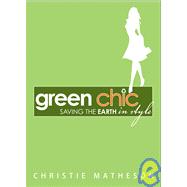
| Introduction: in which I say hi and explain green chic Green Glossary | |
| a few helpful terms to know Little Green Things | |
| baby steps to greener living Home, Green Home | |
| being green a su casa, in two parts Dining and Drinking | |
| eco-friendly food, wine, and more Hello, Gorgeous | |
| beauty and personal care Green is the New Black | |
| info for fashionistas Getting Around | |
| everyday transportation, and ten travel tips On Occasions | |
| parties and celebrations and such Big Green Things | |
| a little section about the big picture My Favorite Green Things | |
| these are a few of, well, my favorite green things Source Stuff | |
| some of the things I read in the course of my research | |
| Acknowledgments | |
| Index | |
| About the Author | |
| Table of Contents provided by Publisher. All Rights Reserved. |
The New copy of this book will include any supplemental materials advertised. Please check the title of the book to determine if it should include any access cards, study guides, lab manuals, CDs, etc.
The Used, Rental and eBook copies of this book are not guaranteed to include any supplemental materials. Typically, only the book itself is included. This is true even if the title states it includes any access cards, study guides, lab manuals, CDs, etc.
Excerpted from Green Chic: Saving the Earth in Style by Christie Matheson
All rights reserved by the original copyright owners. Excerpts are provided for display purposes only and may not be reproduced, reprinted or distributed without the written permission of the publisher.